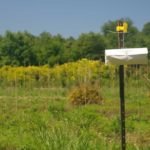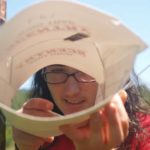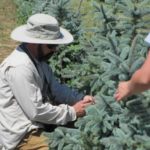IPM
go.ncsu.edu/readext?491604
en Español / em Português
El inglés es el idioma de control de esta página. En la medida en que haya algún conflicto entre la traducción al inglés y la traducción, el inglés prevalece.
Al hacer clic en el enlace de traducción se activa un servicio de traducción gratuito para convertir la página al español. Al igual que con cualquier traducción por Internet, la conversión no es sensible al contexto y puede que no traduzca el texto en su significado original. NC State Extension no garantiza la exactitud del texto traducido. Por favor, tenga en cuenta que algunas aplicaciones y/o servicios pueden no funcionar como se espera cuando se traducen.
Português
Inglês é o idioma de controle desta página. Na medida que haja algum conflito entre o texto original em Inglês e a tradução, o Inglês prevalece.
Ao clicar no link de tradução, um serviço gratuito de tradução será ativado para converter a página para o Português. Como em qualquer tradução pela internet, a conversão não é sensivel ao contexto e pode não ocorrer a tradução para o significado orginal. O serviço de Extensão da Carolina do Norte (NC State Extension) não garante a exatidão do texto traduzido. Por favor, observe que algumas funções ou serviços podem não funcionar como esperado após a tradução.
English
English is the controlling language of this page. To the extent there is any conflict between the English text and the translation, English controls.
Clicking on the translation link activates a free translation service to convert the page to Spanish. As with any Internet translation, the conversion is not context-sensitive and may not translate the text to its original meaning. NC State Extension does not guarantee the accuracy of the translated text. Please note that some applications and/or services may not function as expected when translated.
Collapse ▲Pest and plant disease management consumes a large portion of resources, time, and money to maintain plant quality. Setting aside time for someone dedicated to scouting pests deliberately with a scouting plan is one of the greatest assets in the continuing and never ending strategy to manage and control pests to maintain plant material. Below are several “long reads” to convince you to adopt this strategy as well as begin monitoring for pests or at least utilizing passive scouting strategies to determine when pests have emerged.
- Philosophy, Scouting and Monitoring
- Cultural Techniques
- Biological Control
- Pest Identification
- Regulatory
- Chemical Pesticides
Philosophy, Scouting and Monitoring
Technical Publications
- Herms, D. 2004. Using degree days & plant phenology to predict pest emergence. An excellent primer on using growing degree days, complete with GDD for various insects. In: V. Krischik and J. Davidson, eds. IPM of Midwest Landscapes, pp. 49-59. Minnesota Agricultural Experiment Station Publication 58-07645, 316 pp.
- Green et al. 1990. Systematic approach to diagnosing plant damage. Excellent beginning reference to determine what might be damaging plants. Includes great comparisons between fungus/bacteria, and various insect pests. Not specific to plant genera, this is a big picture reference to help narrow down what is causing plant damage observed. ORNAMENTALS NORTHWEST ARCHIVES. 1990. Vol.13, Issue 6. Pages ii-24.
- LeBude et al. 2012. Assessing IPM use in nurseries in SE USA. A rather lengthy survey of container and field grower’s use of IPM. Prepare to be attacked by lots of tables. The data are organized into three groups of IPM users in descending use of the principles. Learn which techniques growers are using often and determine which ones might need more research and education to implement into production systems.
- Griesbach et al. 2011. Safe procurement and production manual. A systems approach for the production of healthy nursery stock. This takes a systems approach to preventing pests in nurseries by documenting critical control points in the system and offering myriad ideas to improve sanitation and prevention. Also talks about certification of nurseries for shipping plants. By John A. Griesbach, Jennifer L. Parke, Gary A. Chastagner, Niklaus J. Grünwald and John Aguirre. Oregon Association of Nurseries, Wilsonville, Oregon.
- Fulcher et al. 2012 Stakeholder vision of future direction and strategies for southeastern U.S. nursery pest research and extension programming. The focus group and survey format effectively identified grower needs that will help inform nursery producers and guide university Extension and research professionals, university administrators, industry associations, and state and federal government officials toward efficient resource allocation. These prioritizations explain the current state-of-need across a diverse agricultural industry segment and will help further refine future strategic action plans for nursery integrated pest management (IPM) and emerging critical nursery crop pest issues. Another excellent publication from the Southern Nursery IPM (SNIPM) Working Group.
Extension Publications
- Fulcher 2012 W142 Scouting and Monitoring Pests of Deciduous Trees during Nursery Production. This is targeted directly at the nursery industry and the system of IPM described here has been proven effective in nurseries to save money. Dr. Amy F. Fulcher at U. of Tennessee has honed this system for more than a decade into an efficient, productive and effective way of scouting pests, monitoring outbreaks, and uses the least toxic alternative to reduces both spray applications and the amount of chemical applied, and produces the greatest management of target pests.
- Lebude and Fulcher (eds.). 2015. Pest Management Strategic Plan for Container and Field-Produced Nursery Crops in FL, GA, KY, NC, SC, TN, and VA. A Pest Managment Strategic Plan (PMSP) collaborative effort from the Southern Nursery Integrated Pest Management (SNIPM) working group that contains key pest profiles for insects, plant diseases, and weeds. There are scouting and monitoring techniques listed, cultural practices discussed, and beneficial insects included for preventing pests in field and container production of ornamentals. This is a revision of the 2011 PMSP funded by the Southern IPM Center, without whom this wonderful publication or SNIPM would not exist.
- Sadoff, C. 2011 Developing an IPM program for Nurseries. Purdue Univ. Ext.
Purdue Extension offers a complete document with strategies, references, and how-to’s for IPM in nurseries. A must-have for any agent’s toolkit. - 2017 Southeastern US Pest Control Guide for Nursery Crops and Landscape Plantings. This pest control guide was a project of the Southern Nursery IPM Working Group (SNIPM) and collaborators. In it, you will find up to date information about pest control products used in nursery crops, greenhouse crops and ornamental landscape plantings. This publication supplements the more comprehensive integrated pest management (IPM) manuals for trees and shrubs from SNIPM.
- Hale. 1999. Decision-making handbook for insect and mite pests of ornamental plants. Comprehensive publication about scouting insects and mites, suing traps, various chemicals, and calculating growing degree days. Agricultural Extension Service. The University of Tennessee PB 1623
- Chappell et al. 2012. Top 10 nursery IPM practices in SEUSA. A quick, collaborative effort from U. Georgia and other universities on several IPM practices.
- Baker et al. 2004. Crop profile for ornamental plants in NC. Crop profiles provide an overview of the industry and the general insect, plant disease, and weed pests that are challenges. Chemicals are also listed to manage these pests.
- Ruhl et al. 2008. Diagnosing herbicide injury on garden and landscape plants. Discusses various classes of herbicides and how they may cause damage and what it might look like on plants generally. Ruhl, G, F Whitford, S Weller, M Dana, M Putnam, D Childs, R Lerner. Purdue Plant & Pest Diagnostic Laboratory. visit www.ppdl.purdue.edu and www.btny.purdue.edu.
- Robinson, Fare, and Halcomb 2010. Weed Management in Annuals, Perrenials, and Herbaceous Ground Covers. Excellent reference from University of Tennessee for plants that are easily injured from herbicide applications.
General References
- Mini-Poster of Monitoring Borers in NC Nurseries. Use this handout in the field to discuss monitoring and trapping, identification, damage symptoms, chemical control, and date of first emergence. Work was supported by the North Carolina Nursery and Landscape Association.
- IPMPro mobile application for scouting, pest I.D., cultural and chemical recommendations
- NC State University Extension IPM portal. Provides resources for many crops including ornamentals.
- Grieshop, R. Sampling as part of IPM. An interactive pdf of a PowerPoint presentation that discusses sampling techniques for use in IPM from Michigan State Dept. of Entomology.
- USDA. 2013. National roadmap for IPM. This document increases nationwide communication in key focus areas and identifies strategies for IPM research, implementation, and measurement for all pests. The future direction of IPM needs is discussed.
Cultural Techniques
- Vanek, Seagraves and Potter 2012. Maples choose their battles against common insect and mite pests. Relevant information about which maple cultivars are tolerant of common insect and mite pests. One of the easiest ways to prevent pest problems is to plant trees that are tolerant or not susceptible to pests. This article determines which ones met these criteria for a number of common maple pests. Vanek, S., B. Seagraves, and D. Potter. 2012. Fall Nursery News. pp. 11-15.
Biological Control
Extension Publications
- Fiedler et al. 2007. Attracting beneficial insects with flowering plants. Good table that describes when certain native plants flower and when they attract beneficial insects. Pictures of beneficial insects and pollinators and help to I.D. them. Fiedler, A, J Tuell, R Isaacs, and D Landis. Department of Entomology, Michigan State University Extension Bulletin E-2973.
- Becker Underwood. 2012. Advanced Biocontrol for Black Vine Weevil Nemasys® L. Biological control information sheet for rhododendron production.
Pest Identification
Extension Publications
- Potter and Potter 2008 Insect borers of trees and shrubs. Discusses damage caused by both clearwing and beetle borers to various hosts, ways to prevent infestation, and how to control insects. Potter, D.A. and MF Potter. University Kentucky, College of Agriculture, Extension Service. ENT-43.
- Suomia. 2006. Scale insects on ornamentals. Wonderful reference for identification, life stage, and control of the major scales affecting ornamental plants. Suomia, D. Washington State University, College of Agricultural, Human, and Natural Resource Sciences EB1552E.
- Gill et al. 2003. Controlling a Major Nursery Pest Black Vine Weevil, Otiorhynchus sulcatus (Fabricius). Excellent treatment of a common and destructive nursery pest. Gill S, P Shrewsbury, R Reeser Technician, Central Maryland Research and Education Center, University of Maryland Cooperative Extension Fact Sheet 805.
- Parsons, G. 2008. Emerald Ash Borer: A guide to identification and comparison to similar species. Tremendous photos, descriptions, and guidelines to identify many buprestids and compare them to emerald ash borer. GL Parsons, Department of Entomology, Michigan State University November 2008.
- Childs 2008. How to recognize Asian long-horned beetle. Vivid pictures, great descriptions of both the insect and the symptoms on the tree. Also discusses how to report a finding. RD Childs: UMass Extension Landscape, Nursery and Urban Forestry Program.
General References
- Gill, R.J. 1988 Soft Scales of California. Technical Series 01 An exhaustive reference on the subject with color photos, taxonomic keys and descriptions. Raymond J. Gill, Associate Insect Biosystematist, California Department of Food and Agriculture, Sacramento, California, USA.
Regulatory
- NCDA&CS 2007 Imported Fire Ant Treatment Manual. Everything you need to know about treating and being compliant for IFA in all aspects of nursery production, e.g. field, container, ball and burlap, topical, incorporation, and drench.
- Posadas 2013. Systems Approach to Nursery Certification (SANC) 159116. A presentation that does a great job of explaining both the reasoning and application of the SANC system. This Framework for SANC is based on a HACCP-type approach and reduced to a Critical Control Point System (CCPS). Aurelio Posadas, NPB.
Chemical Pesticides
Technical Publications
- Cloyd 2011. Pesticide mixtures and rotations: Are these viable resistance mitigation strategies? A mini-review that discusses the two strategies to delay resistance. The author concludes that either strategy should be incorporated within alternative pest management tactics of cultural and biological control, and sanitation. RA Cloyd 2011 Pest Technology 4:14-18.
- Insecticide resistance action committee (IRAC) mode of action MOA classification. Learn about which chemicals might causes resistance in arthropods and how to avoid that by alternating MoA.
- Hopwood et al 2018. How neonicotinoids can killing bees? Xerces Society. A Review of Research into the Effects of Neonicotinoid Insecticides on Bees, with Recommendations for Action. The latest information on how these compounds affect insects with an ornamental focus included. Discusses impacts worldwide and in U.S. The Xerces Society for Invertebrate Conservation. 2018. J Hopwood, A. Code, M Vaughan, M Shepherd, D Biddinger, E Mader, SH Black, and C Mazzacano.
Extension Publications
- North Carolina Agricultural Chemicals Manual. The manual provides information on the selection, application, and safe and proper use of agricultural chemicals. The manual is revised annually offering a wealth of up-to-date and reliable information covering pesticides, fertilizers, application equipment, specimen identification, growth regulators, and the control of insects, diseases, weeds, and animals.
- Ward. 2012 Fungicides for management of landscape woody ornamental diseases. PPFS OR W 14. This guide is a decision-making tool to help growers select fungicides from different chemical classes (FRAC). Additional information can be found in a number of UK Cooperative Extension Service publications or by contacting county Extension agents.
- Peachey, E. 2016. Weed Control in Container-grown Nursery Stock. Weed management from the Pacific Northwest. Covers sanitation techniques, and chemical specifications for container, field, and greenhouse. A Pacific Northwest Extension Publication; Oregon State University; Washington State University; University of Idaho.
- Cranshaw, W. Classes of pesticides used in nursery and landscape pest management. Excellent overview of classes of pesticides. Chapter 9 from tactics and tools for IPM.
- Brown, A.E. 2013. MOA Insecticides and other chemicals for nursery and landscape. Comprehensive reference from Maryland that explains all the various modes of action with a nursery specific focus. Brown, A.E. Pesticide Information Leaflet No. 43, Pesticide Education and Assessment Programs.
- Baumann et al 1999. Herbicides: how they work and the symptoms they cause. Lists most agricultural herbicides used on AG crops and explains their mode of action and shows symptoms on non-target AG crops. Not technically nursery crops, but at least you can see the damage that might occur from the drift of neighboring farms. PA Baumann, PA Dotray, EP Prostko. 1999. Produced by Agricultural Communications, The Texas A&M University System Extension.
General References
- Wainwright-Evans, S. 2007. Facts about miticides. An excerpt from the Buglady’s article in Nursery Management.
- Cloyd 2012. Pesticide Mixtures. Understanding Their Use in Horticultural Production Systems. Pesticides such as insecticides and miticides are still the
primary means of controlling or regulating many arthropod
(insect and mite) pests in horticultural production systems. - Neonicotinoids come under fire. 2012. News from Nursery Management. A nursery production perspective about the use of these compounds and their affect on non-target insects.












